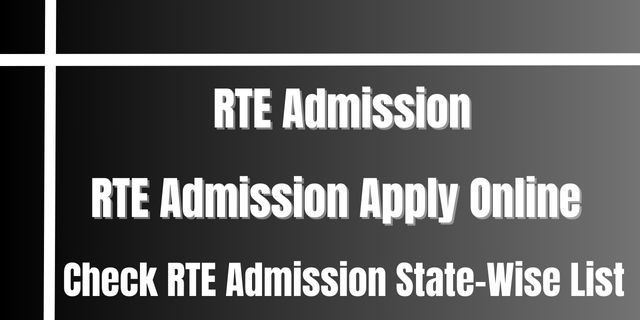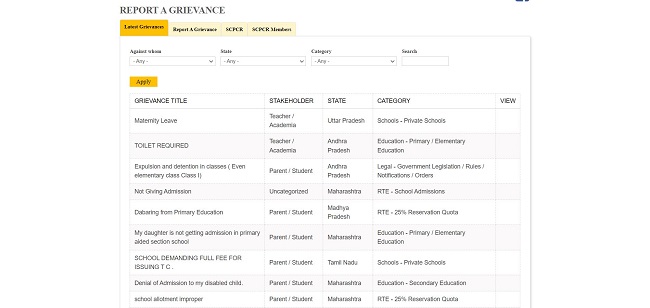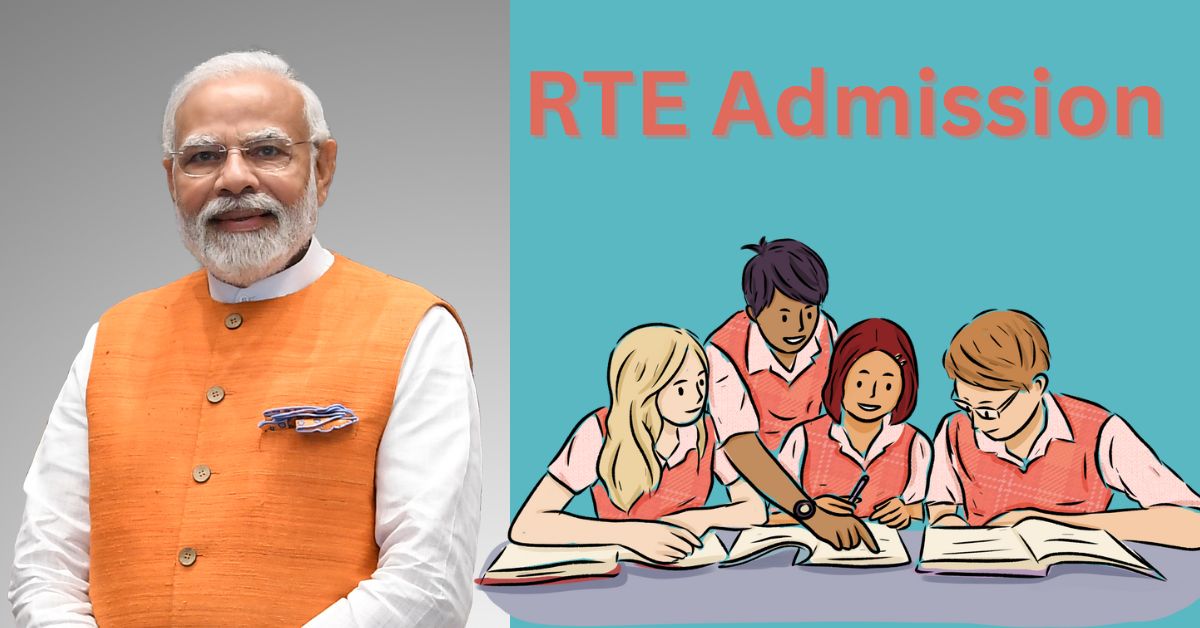RTE Admission:- The Right To Admission Act was created to help students who do not have access to proper education and do not have proper educational funds to continue their education in India. People who belong to the economically backward section of society will be able to get admission in private and government institutes through the development of RTE admission. The admissions are provided on the basis of the economical condition in which a person is living and according to the caste and category that the person belongs to. If the student belongs to the economically backward section of society then 25% seats of in a particular school will be reserved so that the school can accommodate that type of student. You can check out the major information about RTE admission 2024 from the article provided below.
About the Right to Education Act
The Right to Education Act was created for the people so that they can get free education if they belong to a particular cast and category. The students who belong to the economically backward section of society will be able to apply for admission in private institutes and government institutes through the development of this act. The act was created in order to establish a safe space for the people who belong to the economically backward section.
- There are a lot of students who do not have access to basic education because they do not have funds that can help them continue their education.
- The admissions are available for people below the age of 14 years so that they can get primary education and be regarded as literate.
- The schools will be providing admission based on the economic condition of a candidate rather than taking interviews with the parents.

Objective of RTE Admission
The main objective of RTE admission is to provide a safe space to people who are coming from the economically backward section of society and do not have proper resources that can help them to continue their life. Basic education is a right of people who are above the age of 6 years and below the age of 14 years because then only they will be able to get basic information about education. The people will be able to get admission in private and government institutes through the development of RTE admission created by the Indian government. The main motive behind the development of this act is to provide a reliable and evolving source of information to the people belonging to the economically backward section of society. Students will be able to get basic literacy through the development of this scheme.
Benefits of RTE Admission
The following benefits will be provided to the people who are applying for the right to admission initiative created by the Indian government:
- Free and compulsory education for children between the ages of 6 and 14 years.
- Minimum norms in elementary schools.
- Private schools must reserve 25% of seats for children and will be reimbursed by the government as part of the public-private partnership plan.
- Children from economically weaker sections and socially disadvantaged groups can gain admission to private schools.
- Prohibition of unrecognised schools from practice.
- No donation or capitation fees, and no interviews for admissions.
- No child shall be held back, expelled, or required to pass a board examination until the completion of elementary education.
- Provision for special training of school dropouts to bring them up to par with students of the same age.
- Empowerment of children through education, enabling them to secure better livelihoods and contribute to the development of the country.
Eligibility Criteria
The eligibility criteria for RTE admission in 2023-24 can vary slightly from state to state, but the general criteria include:
- The child should be between 6 and 14 years of age.
- The annual family income of the child’s parents or guardians should be less than a certain amount, which can vary by state.
- The child should be a resident of the state where admission is sought.
- The child should belong to a socially and economically disadvantaged category, such as SC/ST/OBC or a minority community.
- The parents or guardians should provide documents to prove their income, residency, and category, such as Aadhaar card, income certificate, caste certificate, and proof of residence.
How to Apply for RTE Admission 2024?
In order to successfully apply for admission you will have to follow the simple procedure given below:
- You will first have to visit the official website of this scholarship by clicking on the link given here

- The home page will open on your screen
- The details related to the right to admission act will open on your screen.
- You have to click on the Apply now button.
- The application form will open on your screen.
- You have to fill out the application form.
- Upload all of the documents.
- Fill out the application form successfully.
Required Documents
Check out the details related to the documents required from the pointers given below:
- Aadhaar Card
- Birth Certificate
- Income Certificate
- Caste Certificate issued by a competent authority
- Father’s or Mother’s Aadhaar Card
- Address Proof like an Aadhaar card, Driving License, Ration Card, Passport, Voter ID, Bank passbook, etc
State Wise Table
You can check out the table given below in order to no more about the state- wise hotel created by the organization for the help of the students:
Submit Grievance
- You will first have to visit the official website of this scholarship by clicking on the link given here
- The home page will open on your screen
- The details related to the Right to Admission Act will open on your screen.
- You have to click on the Report A Grievance

- A new page will open on your screen and you will have to enter the details related to your complaint.
- Click on the submit button to submit your complaint.
Contact Details
- Email: [email protected]
In conclusion, the Right of Children to Free and Compulsory Education Act or RTE is a significant step towards providing free and compulsory education for children in India. It ensures that all children between the ages of 6 and 14 have access to education and sets minimum norms for elementary schools. RTE Platform is a credible and informative resource that aims to bring together all the knowledge related to the RTE Act and primary education in India.
RTE Admission FAQs
RTE stands for Right to Education. It is a law enacted by the Indian government in 2009 that provides free and compulsory education for children between the ages of 6 and 14.
Children between the ages of 6 and 14 from economically and socially disadvantaged backgrounds are eligible for RTE admission.
The benefits of RTE include free and compulsory education, no capitation fees, no donation fees, and no interview for admission. It also mandates that all private schools reserve 25% of their seats for children from economically and socially disadvantaged backgrounds.
To apply for RTE admission, parents or guardians can visit the official website of the respective state’s education department and follow the instructions for the online application process.
The documents required for RTE admission may vary from state to state, but typically include the child’s birth certificate, residence proof, and income certificate of the parents or guardians.

